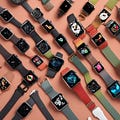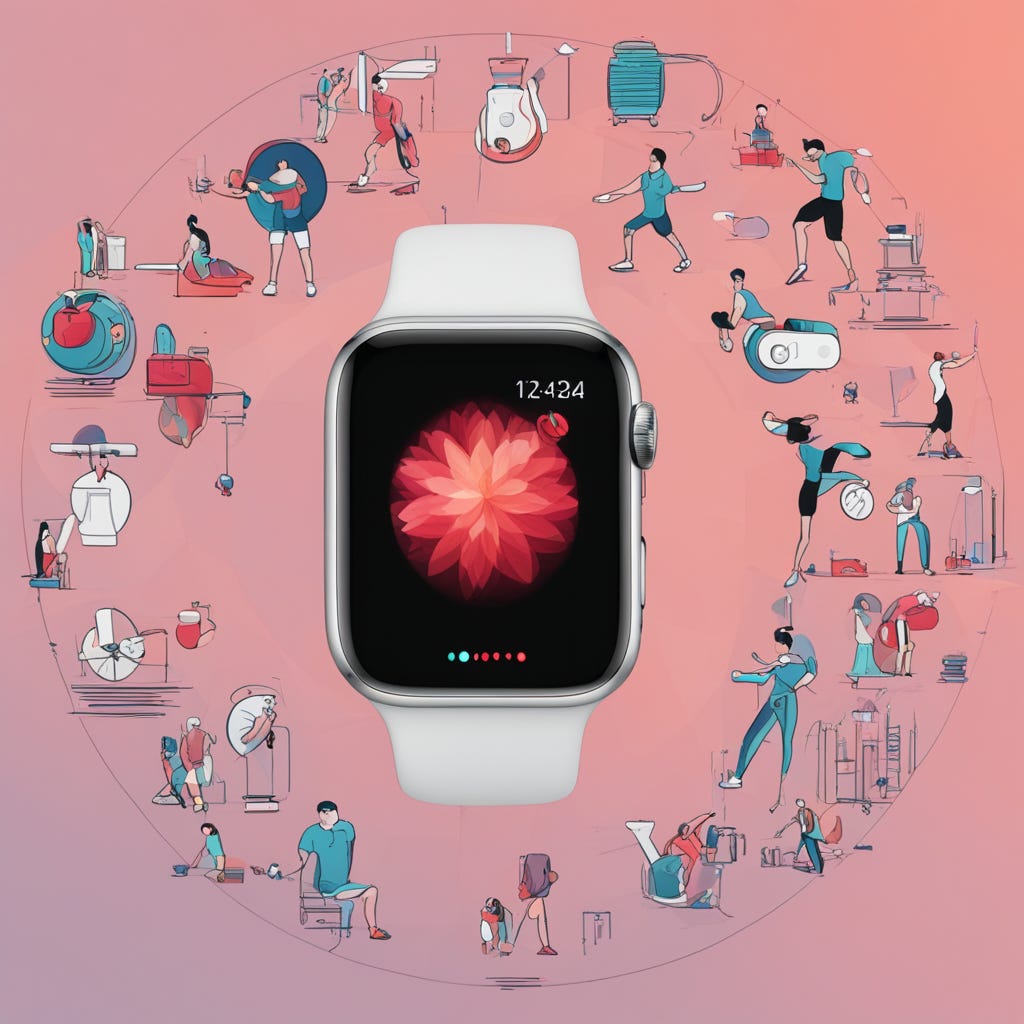What can my Apple Watch tell me about my health? Part 1
From the Apple Watch SE to the Apple Watch Ultra 2: Exploring the device sensors and their utility for health monitoring.
The Apple Watch is more than just a timepiece. It is a powerful wearable device that can help you monitor your health and fitness in a variety of ways. But even the most sophisticated of sensors have limits. Here, we will dive into the sensors, their capabilities, and where the limits are in 2023.
First, let’s review the Apple Watch sensors
Beginning with Apple Watch Series 4 all of the devices include an optical heart sensor (which uses photoplethysmography1), an electrical heart sensor (for electrocardiogram2 capture), an accelerometer, and a gyroscope. Apple Watch SE includes all of these, except for the electrical heart sensor. Apple Watch Series 6 added a blood oxygen sensor and Apple Watch Series 8 added sensors to check wrist temperature. Apple Watch Ultra also includes an altimeter, water temperature sensor, and depth gauge - these are not currently relevant for health monitoring, but can be useful for people focused on fitness.
The sensors alone can provide raw data, which Apple interprets into different metrics using algorithms. This results in various readings you can view on your watch or iPhone — from simple numbers such as resting heart rate to more complex predictions such as cycle tracking, irregular rhythm notifications, and sleep stages.
Here is a general breakdown of which sensors populate which metrics:
Heart-related metrics
Apple Watch will use the optical heart sensor to show you heart rate, resting heart rate, heart rate variability, heart rate recovery, as well as atrial fibrillation (afib) history and irregular rhythm notifications. The electrical heart sensor powers the ECG app.Sleep-related metrics
Apple Watch can track your sleep patterns, including how long you sleep, how often you wake up, and how much time you spend in each sleep stage. It uses a combination of sensors to arrive at these metrics, mainly the optical heart sensor and accelerometer.Cycle tracking
You can track your period on your Apple Watch, using mostly information you log. Starting with Apple Watch Series 8, the watch can use the temperature sensor to estimate retrospectively when you ovulated.
Blood oxygen
Apple Watch tracks your blood oxygen using the blood oxygen sensor. We wrote more here regarding this sensor and its accuracy.Wrist temperature
Apple Watch cannot give you a core body temperature reading, but it can track your wrist temperature overnight, provide you with a baseline measurement, and show you changes from your baseline using the temperature sensors starting on Apple Watch Series 8.
Fitness tracking
Apple Watch captures your distance traveled, activity, calories burned, etc. Many of these can be captured by your iPhone alone as it is also equipped with a gyroscope and accelerometer. Some of the data is calculated with information you provided to setup your health and fitness apps, such as height and weight.
Of these features, Apple has obtained FDA clearance for only the ECG application, the irregular rhythm notifications, and (for people with a history of afib) a feature to help track how often someone shows signs of atrial fibrillation. Notably, these are only FDA approved for people 22 years and older.
Beyond FDA clearance, all of the components of the watch depend on using the watch as it was intended. There are various factors that may impact the accuracy of your data, including wearing the watch too tight or loose, using it on an area that has a tattoo, having skin that is damp from sweat or water, etc.
In part 2 of this series, we will get into how the metrics provided by this wearable device can help you monitor your health and the limits of this data. In the meantime, if you have questions about your Apple Watch data, give Empirical Health a try!
Photoplethysmography (PPG) is a method that uses emitted light to derive a measurement of pulse or oxygenation based on how that light interacts with the blood flowing past the light.
Electrocardiography uses electrodes to measure the voltage across your heart. In the case of Apple Watch, the electrodes are on the back of the watch and on the digital crown. To complete the circuit to measure electrical conduction, your wrist touches the back of the watch and a finger touches the digital crown.




